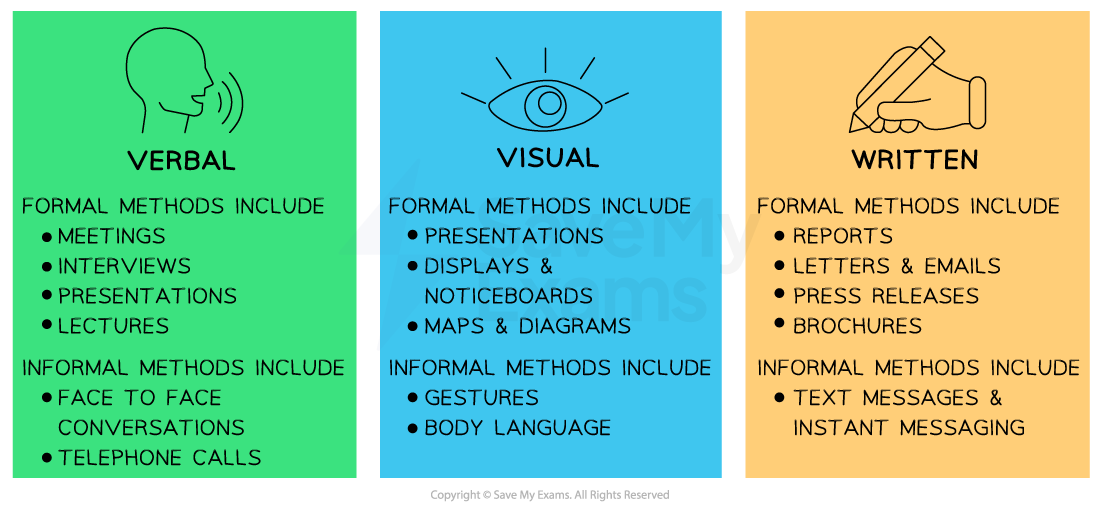- The aim of communication is to exchange or transfer information
- Formal communication is channeled through a businesses formal organisation structure and is likely to be capable of being recorded in some way
- Informal communication is any communication that takes place outside of the official channels and is unlikely to be formally recorded

The main forms of communication used by businesses
- The effectiveness of each method depends on the business context, the nature of the communication and the personal preferences of both the sender and receiver of information
Strengths & Weaknesses of a Range of Communication Methods
Method of Communication
|
Strength |
Weakness
|
Face-to-Face Communication |
- Face-to-face communication allows for the exchange of facial expressions, body language, and tone of voice which enhance understanding
|
- Face-to-face communication may not always be feasible due to geographical distances or time constraints
|
Written Communication |
- Written communication provides a paper trail that can be referred to in the future for clarity
|
- Without facial expressions and tone of voice, written messages can sometimes be misinterpreted or lack emotional context
|
Phone Calls |
- Phone calls allow for real-time communication, enabling quick exchange of information and resolution of queries
|
- Without seeing the other person, it can be challenging to interpret their body language and facial expressions accurately
|
Video Conferencing |
- Video calls allow people in different locations to connect
|
- Unreliable internet connections or audio/video problems can hinder effective communication
|
Instant Messaging & Chat Applications |
- Instant messaging (WhatsApp, Slack) enables fast and real-time communication making it ideal for brief exchanges or urgent matters
|
- Text-based communication lacks non-verbal cues, increasing the chances of misunderstandings or miscommunication
|

